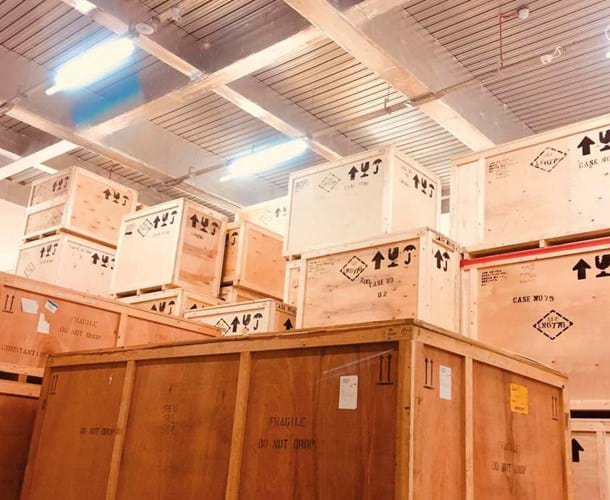Exports from the UK into the EU will require customs clearance to leave. Then on arrival they will require customs clearance and will be subject to the duty and sales taxes in that country.
For auctions held in the UK the sales tax on the buyer’s premium previously charged to EU buyers will now apply only to UK purchasers.
For shipments into the UK from the EU, the UK government has introduced Postponed VAT accounting (users must apply for authorisation, then the importer does not pay VAT on the arrival of the goods and instead it is deferred and should be accounted for on the VAT return). This is to reduce pressure and congestion at the border and helps with business cashflow.
However, many art and antiques businesses which import items from EU countries will have to suffer the import VAT due if they want to use the VAT margin scheme (the scheme that allows tax to be paid on the difference between what you paid for an item and what you sold it for, rather than the full selling price).
Some businesses and importers are expected to continue to import items on a temporary import basis (Temporary Admissions) until the item is sold.
Mark Dodgson, secretary general at the British Antique Dealers’ Association (BADA), explains: “If the temporary import arrangements are used and the items are re-exported within two years of import then no VAT is payable provided that, like other exports, proof of export is obtained.
“If items are imported and the importer is not using the temporary import arrangements, but wishes to use the margin scheme for such imported items, then import VAT is paid but cannot be reclaimed at the time of import; if they are subsequently exported then it can be re-claimed at that time.”
Keeping busy
The changes have been keeping trade associations busy. The Society of Fine Art Auctioneers, SOFAA, compiled a detailed set of art market questions and answers based on replies obtained from the Department for Digital, Culture, Media and Sport (DCMS). It distributed the document to its members earlier this month ahead of producing a full briefing paper.
SOFAA chairman Helen Carless said: “SOFAA has been liaising with ATG to ensure that as much information as possible is made available to all in the art market and as soon as possible. SOFAA’s links with DCMS have proved very valuable in this respect and we shall continue to work closely with BAMF [British Art Market Federation] and ATG to keep everyone as up-to-date as possible.”
The government website provides further information on these topics:
Import and Export advice:
Postponed VAT accounting:
www.gov.uk/guidance/check-when-you-can-account-for-import-vat-on-your-vat-return
VAT margin scheme:
Temporary Admission:
www.gov.uk/guidance/apply-to-import-goods-temporarily-to-the-uk-or-eu
The art market sector from 2021:
www.gov.uk/government/collections/the-art-market-sector-from-january-2021















